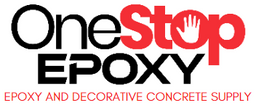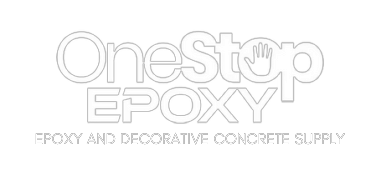Epoxy flooring can transform your space into a sleek and durable environment, but one often underestimated aspect is moisture control. Moisture-related problems can wreak havoc on your flooring project, leading to costly repairs and a compromised aesthetic. In this comprehensive guide, we will explore moisture vapor barriers, helping you understand when they are essential and how to make the right choices for your epoxy flooring project.
Why Moisture Matters
Concrete serves as the foundation for any successful flooring project. However, they must meet specific moisture criteria to ensure a flawless installation. Excess moisture in the substrate can lead to a host of problems, including floor failure. In fact, moisture-related issues cost billions annually and disrupt the lives of both homeowners and businesses.
During the concrete curing phase, water plays a pivotal role in achieving the intended strength of the material. Yet, once the curing is complete, excessive moisture can be detrimental to your flooring plans. To prevent such issues and guarantee a proper bond with adhesives, the base must be sufficiently dry.
Ensuring Moisture Control: The Role of Moisture Vapor Barriers
Now that we've explored why moisture is a critical factor in the success of your flooring project, it's time to dive deeper into a key solution that can help you maintain moisture levels and protect your investment. Enter the world of Moisture Vapor Barriers, a vital component in moisture management for your concrete substrates.
Why Moisture Vapor Barriers Matter
Moisture Vapor Barriers take the battle against excess moisture to a new level. These specialized barriers act as a safeguard against moisture intrusion from below, providing an additional layer of protection for your flooring.
Moisture Vapor Barriers are designed to inhibit the passage of moisture vapor through your concrete substrate. By doing so, they not only prevent moisture-related issues but also enhance the overall performance and longevity of your flooring system.
In the upcoming section, "What Is a Moisture Vapor Barrier," we will delve deeper into the specifics of these barriers, exploring their types, applications, and benefits. By mastering the art of moisture control and understanding the role of Moisture Vapor Barriers, you'll be better equipped to make informed decisions for your flooring project's success.
What Is a Moisture Vapor Barrier?
Let's break it down in simple terms. A Moisture Vapor Barrier, often referred to as an MVB, is like a protective shield for your epoxy flooring. Picture it as a special layer that goes between your concrete floor and the epoxy coating. Its job is to keep moisture from sneaking up through the concrete and causing problems with your epoxy floor.
Now, here's an important point to clarify. When we talk about an MVB, we're not talking about a roll of plastic like those rolls of plastic sheeting you might see under concrete slabs being poured. This is different. We're talking about a resinous material, it’s epoxy, typically 100% solids epoxy.
So, imagine this MVB epoxy as an invisible armor for your flooring. It's there to stop excess moisture in its tracks because too much moisture can lead to issues like poor adhesion, (water is a bond breaker) unsightly bubbles or blisters in your flooring, and even the growth of mold and mildew under your epoxy coating. None of that sounds appealing, right? I sure hope it doesn’t.
By having this MVB in place, you're essentially creating a moisture-proof barrier that ensures your epoxy flooring stays strong and resilient. It protects your investment and keeps your floor looking good for the long haul, which means fewer headaches and fewer costly repairs down the road.
In a nutshell, a Moisture Vapor Barrier is like the unsung hero of your epoxy flooring project. It quietly does its job, making sure moisture doesn't ruin your beautiful floor. So, when you're bidding your next job or getting ready for an epoxy floor installation, you need to know if your epoxy flooring project will require a Moisture Vapor Barrier..
What Are The Signs You May Need a Moisture Vapor Barrier
Subfloor Moisture Issues: Visible dampness or moisture on your concrete surface is a sign you may need a MVB.
Previous Moisture-Related Problems: If you've encountered flooring issues like peeling, blistering, or cracks in an epoxy floor due to moisture, an MVB is going to be an essential component in your installation.
Location and Climate Considerations: Regions with high humidity levels or areas prone to heavy rainfall most likely will require a moisture vapor barrier to safeguard your epoxy flooring investment. If you are a Florida area garage Epoxy Installer, or coastal region such as Georgia, South Carolina, North Carolina, Louisiana, etc. you’ll greatly benefit from a 100% solids epoxy with a built in MVB.
Benefits of Using a Moisture Vapor Barrier:
Why invest in a moisture vapor barrier? Let's explore the advantages:
Enhanced Durability: A Moisture Vapor Barrier significantly enhances the lifespan of your epoxy flooring by reducing the risk of moisture-induced damage.
Preventing Mold and Mildew Growth: By blocking moisture intrusion, you create an environment less conducive to mold and mildew, ensuring a healthier space.
Protecting the Epoxy Coating: The vapor barrier acts as a protective shield, ensuring your epoxy coating remains resilient and impervious to moisture-related challenges.
Avoid A Do Over: Avoid getting that dreaded phone call at some point in the future where your customer says “My floor is peeling”
When Is a Moisture Vapor Barrier Not Necessary?
In certain scenarios, a moisture vapor barrier might not be a priority. These include:
Dry Climates: Regions with consistently low humidity and minimal moisture issues may not require a vapor barrier. Shout out to Arizona Epoxy Installers who rarely if ever have to deal with moisture challenges.
Properly Sealed Concrete Surfaces: If your concrete substrate is effectively sealed and moisture isn't a concern, bypassing the vapor barrier could be an option.
Three Ways To Test For Moisture In Concrete
Moisture Meter And Why Every Professional Epoxy Installer Must Have One
Personally I use a Tramex CMEX5 moisture meter which is one of many models by Tramex. Of course there are competitor models out there making moisture meters available in all different shapes, sizes, and of course, price ranges.
I chose my Tramex because I believe it’s the best bang for your buck so Tramex CMEX5 moisture meter is the model I’m going to talk about in this article. This moisture meter is specifically calibrated for concrete, making it highly accurate in assessing moisture content. It provides instant and precise quantitative measurements of the moisture content in concrete.
Non-Destructive Testing Unlike some moisture testing methods that may damage the surface or require destructive sampling, the Tramex CMEX5 offers non-destructive testing. It allows installers to gather critical moisture information without harming the concrete substrate.
Quick Assessments Professional epoxy installers often work on tight schedules. The CMEX5's rapid measurement capability means installers can quickly evaluate moisture levels on-site, saving valuable time during the project.
Prevent Moisture-Related Issues By using the Tramex CMEX5 moisture meter, epoxy installers can proactively identify and address potential moisture problems in the concrete substrate. This early detection helps prevent adhesion issues, blistering, and other moisture-related complications that can jeopardize the quality of the epoxy flooring.
Optimize Flooring Performance With precise moisture data at their fingertips, epoxy installers can make informed decisions about when and how to proceed with the flooring installation. This ensures that the epoxy adheres properly and performs at its best over the long term.
Client Satisfaction Utilizing a trusted tool like the Tramex CMEX5 moisture meter demonstrates a commitment to quality workmanship. It enhances client satisfaction by minimizing the risk of moisture-related flooring failures, which can lead to costly repairs and disruptions.
In summary, the Tramex CMEX5 moisture meter is a valuable companion for professional epoxy installers. Its accuracy, speed, and non-destructive testing capabilities make it an essential tool for assessing moisture levels in concrete substrates, allowing epoxy installers to ensure the success of their projects and maintain high-quality standards.
Conclusion Using a moisture meter such as the Tramex CMEX5 is a quick and dirty method for assessing moisture levels in concrete. It can and should be utilized when gathering information for bidding on jobs as well as at the onset of every flooring installation job. Once you’ve passed your initial investment, there is no ongoing expenses other than an occasional battery replacement and if taken care of your Tramex moisture meter will serve you well. The downside is the moisture is only measured to about ¼ of an inch which does, when it comes right down to it, give you a pretty good idea of what level of moisture you are dealing with.
ASTM F2170 The Time Tested And Proven Method Of testing For Moisture In Concrete
The ASTM F2170-19a for Determining Relative Humidity in Concrete Floor Slabs Using in situ Probes, is a standard developed by ASTM (American Society for Testing and Materials Standard Test Method) International. It provides guidelines and procedures for measuring the moisture conditions within a concrete slab, particularly when assessing whether it's suitable for the installation of moisture-sensitive floor coverings, such as epoxy.
Procedure for Testing Moisture Using ASTM F2170:
Preparation Before starting the test, ensure that the concrete slab has had sufficient time to cure and acclimate to its environment. Typically, the concrete should be in place for at least 60 days.
Selecting Test Locations Determine the areas within the concrete slab where moisture testing will take place. ASTM F2170 recommends testing at a minimum of 3 test locations for the first 1,000 square feet of the area, plus one additional test for each additional 1,000 square feet.
Drilling Holes Drill a hole into the concrete slab at each selected test location. The holes should be drilled to a specific depth, typically around 40% of the slab's thickness. For example, if the slab is 4 inches thick, drill the hole to a depth of about 1.6 inches.
Inserting RH Probes Place RH probes, also known as relative humidity sensors, into the drilled holes. These sensors measure the relative humidity within the concrete slab. Ensure that the probes are properly installed and sealed to create an airtight environment.
Sealing the Holes Seal the holes around the RH probes with an appropriate sealing compound. This prevents moisture from escaping and ensures accurate readings.
Equilibration Period Allow the RH probes to equilibrate within the concrete slab for a specified period, typically 72 hours, although the duration may vary based on project requirements and conditions.
Data Collection After the equilibration period, use a handheld meter or data logger to collect the relative humidity readings from each of the RH probes. These readings represent the moisture conditions within the concrete at the specified depths.
Data Analysis Analyze the collected data to determine if the moisture levels within the concrete slab meet the requirements for the specific flooring material to be installed. Different flooring materials may have different acceptable moisture tolerance levels.
Reporting Prepare a comprehensive moisture test report that includes the test locations, RH probe data, and whether the moisture conditions meet the flooring manufacturer's specifications.
ASTM F2170 provides a standardized and reliable method for assessing moisture levels within concrete slabs, allowing professionals to make informed decisions when installing moisture-sensitive floor coverings like epoxy. It helps prevent moisture-related flooring issues and ensures the long-term performance of the flooring system.
Conclusion The ASTM F2170 method of testing for moisture in concrete is very accurate, however it is time consuming and expensive.
ASTM D4263-05 The Simple Cheap and Strictly Visual Method Of Testing For Moisture In Concrete
The ASTM D4263-05 method is used to make your best visual “guestimate” about the moisture condition of concrete floors or slabs offering a useful alternative for Homeowners and DIYers that don’t have access to the meters and probes aforementioned.
Procedure for Testing Moisture Using ASTM D4263-05
Preparation Ensure that the concrete surface you intend to test is clean, dry, and free from any contaminants or surface coatings that could interfere with the test.
Selection of Test Areas Identify the specific locations on the concrete surface where you want to perform moisture testing. These areas should be representative of the overall moisture condition.
Plastic Sheet Placement Cut a clear plastic sheet, typically 18 inches by 18 inches in size, and place it flat on the concrete surface in the selected test area.
Sealing the Plastic Sheet Use an adhesive tape or sealant to create an airtight seal around the edges of the plastic sheet. This seal prevents moisture from escaping or entering from the sides.
Waiting Period Leave the sealed plastic sheet in place for a specified period, typically 16 to 72 hours, depending on the test requirements and conditions. During this time, the plastic sheet acts as a moisture barrier, and any moisture present in the concrete will accumulate on the underside of the sheet.
Visual Inspection After the waiting period, carefully remove the plastic sheet and inspect the concrete surface beneath it. Look for signs of moisture, such as darkened areas or water droplets on the concrete surface or on the plastic itself.
Interpretation The presence and extent of moisture-related changes on the concrete surface, as observed during the visual inspection, provide an indication of the moisture condition. Darkened areas or water droplets suggest that moisture is present.
It's important to note that ASTM D4263-05 is a qualitative method and provides an indication of moisture presence rather than precise moisture content measurements. It's commonly used as a preliminary assessment to identify areas of concern and to decide whether more detailed moisture testing, such as a moisture meter or the ASTM F2170 is necessary.
When using ASTM D4263-05, it's crucial to follow the standard's guidelines carefully and consider the environmental conditions and specific project requirements to ensure accurate results.
Choosing the Right Moisture Vapor Barrier
Now that you understand the critical role of Moisture Vapor Barriers (MVBs) in protecting your epoxy flooring project, it's time to explore your options and select the right one for your specific needs. Not all MVBs are created equal, and choosing the appropriate one can make a significant difference in the success of your project.
Here are some notable MVB options available at OneStopEpoxy.com
LABPOX MVB FAST by LabSurface
Key Features:
- Fast Cure: Dries in just 4 - 6 hours
- Robust Moisture Resistance: Provides 25 lbs of moisture vapor resistance
- Smooth Finish: Dries with a glassy smooth finish, ideal for building your epoxy floor upon
LABPOX MVB FAST by LabSurface is an excellent choice if you're looking for a quick-drying solution with high moisture resistance. Its fast cure time allows you to proceed with your epoxy flooring installation promptly, and the glassy smooth finish ensures a solid foundation for your epoxy coating.
100% Solids Moisture Vapor Barrier by One Stop Epoxy
Key Features:
- Deep Penetration: Seeps deep into the concrete substrate.
- Robust Moisture Resistance: Delivers 25 pounds of moisture vapor resistance
For those who prioritize deep penetration into the concrete substrate, the 100% Solids Moisture Vapor Barrier by One Stop Epoxy is an excellent choice. It provides excellent moisture resistance while ensuring that moisture is effectively blocked from affecting your epoxy flooring.
150 FC - 100% Solids Epoxy, Primer, and MVB All in One
Key Features:
- All-in-One Solution: Combines epoxy, primer, and MVB properties
- Ideal for Garage Flake Floors: Suitable for epoxy garage flake floors
- Moisture Resistance: Provides 12 pounds of moisture vapor resistance
If you're planning an epoxy garage flake floor and want a convenient all-in-one solution, consider 150 FC 100% solids fast cure epoxy. It simplifies the process by incorporating epoxy, primer, and MVB properties in a single product. While it offers slightly lower moisture resistance than other options, it's an excellent choice for specific applications like garage floors that demand a swift installation process and you won’t need to be concerned about moisture issues.
Choosing the right moisture vapor barrier depends on your project's requirements, timeline, and environmental conditions. Consulting with a flooring professional can help you make an informed decision and ensure that your epoxy flooring project is protected from moisture-related issues.
In the flooring world, moisture can be a hidden enemy, capable of causing problems for your epoxy floor. But don't worry, we've got the solution – Moisture Vapor Barriers (MVBs). These unsung heroes protect your floor from excess moisture, ensuring it stays strong and beautiful for years. We've covered everything, from recognizing when you need them to choosing the right one. At OneStopEpoxy.com, we're here to help you make the best choice. With the right MVB, your epoxy floor will not only last but also look great."
Links
https://tramexmeters.com/
https://tramexmeters.com/moisture-meters/cmex5-concrete-moisture-encounter
https://www.astm.org/f2170-19a.html
https://lignomatusa.com/product/rh-hygrometer/
https://www.astm.org/d4263-83r18.html


